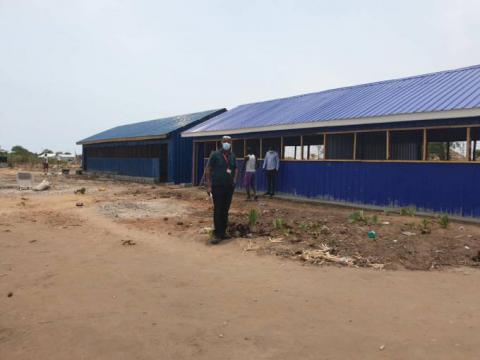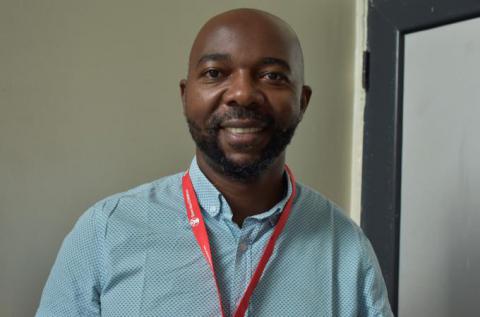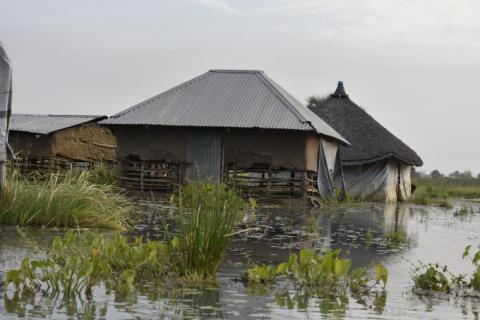Dimmed Hope for Flood Affected Children in South Sudan
Blog by: Jimmy Tuhaise – Head of Humanitarian Response, Save the Children South Sudan
The war torn town had just started returning to normalcy as many refugee returnees from across East African region were trying to start a life. Bor is the capital town of the Great Jonglei state of South Sudan famous for being one of the areas worst affected by the war in 2013. The name Bor means ‘valley’ and not surprising that it is a flood prone area. The rains of 2020 with the support of the Nile River flooded the biggest part of Bor town displacing thousands of people. Homes, villages, schools, hospitals, markets were all flooded and livestock lost. The floodwaters have remained for the whole year deterring returnees to resettle in their homes. A few people managing to return are coming back to ruined homes still surrounded with water. The town of Bor became an Island and can only be accessed by small boats and Canoes. Only those that can afford canoe can be mobile.
I witnessed children swimming in contaminated stagnant waters. Many have been reported to drown, water bone diseases such as Acute watery Diarrhea, typhoid etc are reported at raise. Many children have been employed in canoe business of riding people across the floodwaters as a means to cater for their families.
Another rainy season for 2021 has already started and expected to intensify starting in May. A resurgence of floods has dimmed hope for children returning home and resuming school is lost.
I met Adumu Panchol a single mother of 5 children in her home she recently returned to the Nigel community of Bor. She had just repaired the roof of her house (hut) but cautious that this year’s (2021) rains are starting soon and she will be displaced again with her children. She lost all her household items to floods.
I also talked to her daughter Yom, 12 years. She says, “I lost all my books, pencils and uniforms when our house flooded. I am happy we have returned to our house”. Yom does not know that another round of floods is approaching.
While Bor is a flood prone area, the magnitude of 2020 floods that displaced over 404,000 people were unprecedented. Communities, Authorities and humanitarian actors were found unaware. The 2021 rains however are well known and the likelihood of floods is eminent, yet little has done to improve mitigation and prevention.
Homes/Houses affected by floods in Bor.
I end ended my first day disheartened, thinking about the suffering and the future of Children in Bor, as the floods would disrupt their education and their and homes were destroyed. I have worked with IDPs and refugees in over 20 countries now and I know that recurring displacement is very traumatic to children and families.
I however started my day 2 with a sense of hope, as I visited some of the flood IDP settlement in Bor. Save the Children is providing protection services such as case management and psycho-social support to children, constructed temporally learning Spaces to relocate flooded school, and proven access to safe water. I shared the pride of the save the Children’s ‘winning team’ in Bor.

Save the Children has been providing humanitarian assistance to Flood affected communities and IDPs since the onset in the areas of Child protection, Education, health, Nutrition and livelihood. SCI has relocated flooded schools to Temporally Learning Space, distributed NFIs and launched a full spectrum child protection program in Mangala IDP camp.
While responding to 2020 floods, organizations like Save the Children immediately need to raise awareness and secure funds to preposition relief assistance such as tents, food items, school items, health and nutrition supplies, and canoes to respond to the high likely floods that are likely to start in May this year.
 South Sudan
South Sudan 
